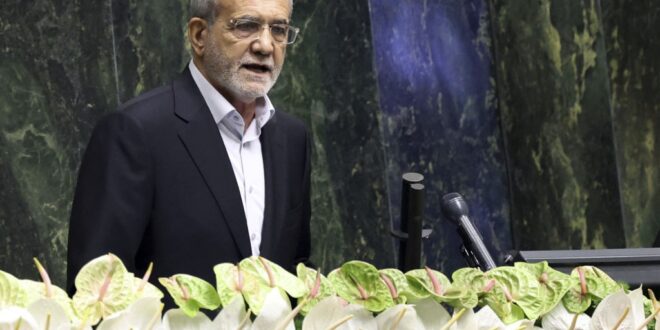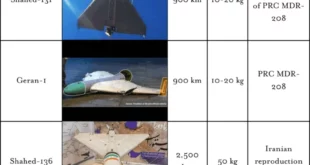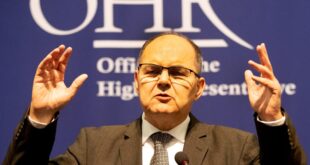Gorbachev had a thin resume as an apparatchik who had risen in the party by doing nothing, in fact, by being nobody.
When he came to London to be promoted by Margaret Thatcher, his 10-line resume introduced him as the Central Committee’s agricultural tsar who had risen to be party boss and later president of the USSR.
He was a blank face on which one could draw one’s ideal face for a Soviet leader.
Iran’s President Pezeshkian offers that kind of blank face. His thin resume inspires a variety of fanciful images.
Could Pezeshkian be Iran’s Gorbachev?
Referring to President Masoud Pezeshkian, the question was headlined in a Tehran daily Tuesday and triggered a torrent of comments.
The paper’s commentator described Pezeshkian as a man trusted by the system and thus capable of introducing unspecified reforms to save Iran from unspecified dangers.
This is not the first time that regime insiders call for adjustments in its trajectory.
The first to do so was Supreme Leader Ayatollah Ruhollah Khomeini, the founder of the Islamic Republic, who issued an 8-point reform manifesto which, had it been implemented, would have made Iran a Scandinavian-style democracy minus the monarchy.
Needless to say, that didn’t happen.
Instead, the nation witnessed mass executions, the pursuit of an unwinnable war against Iraq and flood-like spread of corruption.
A decade later, it was the turn of President Ali Akbar Hashemi Rafsanjani to masquerade as champion of reform.
However, by that time, because Mikhail Gorbachev’s glasnost and perestroika roadshow was going nowhere, Rafsanjani labeled himself “General of Reconstruction” with China’s de facto ruler Deng Xiaoping as model.
The message was: no political liberties but faster economic growth and income distribution.
As expected, it soon became clear that the Deng model wouldn’t work in Iran, if only because the Islamic Republic wasn’t the People’s Republic.
In the following decade, it was the turn of President Muhammad Khatami to don the mantle of reform.
Khatami had an even bigger ambition: correcting the errors of the European Renaissance and turning the Islamic Republic into a model for mankind.
What happened was different.
Iran witnessed a new wave of executions and “the chain-murders” of real or imagined dissidents, while the economic situation worsened.
His successor, President Mahmoud Ahmadinejad, had the wisdom of sticking to the Khomeinist hymn-sheet by calling for the destruction of Israel and promising to “expel” the American “Great Satan” from the Middle East.
Next it was the turn of President Hassan Rouhani to revive the Gorbachev narrative by accepting to put the Islamic Republic under tutelage by the so-called 5+1 group led by the United States. Eight years later he left Iran more isolated, poorer and more stricken by corruption and violence.
Lenin was the first reformer in the USSR.
In 1921 in a letter to Politburo member Lev Kamenev he wrote: We have established the dictatorship of proletariat but there are few workers in the party. And to revive the economy we need cooperation by segments of the bourgeoisie.
He then introduced his Perestroika under the title of New Economic Policy (NEP). Under it, the party would maintain proletarian dictatorship without proletariat and let the bourgeoisie reform the economy.
People forget that after causing the death of tens of millions because of his collectivization policy, Stalin, too, tried his version of the Gorbachev game.
It was named “taking into account” (rasmiejenavme) local geographic, historic and cultural realities of the different nations of the empire.
Having won power after a seven-month struggle against hardline Stalinists, Nikita Khrushchev spent three years to consolidate his position before launching his Gorbachev-style show in the 20th Congress of the CPSU in 1956.
He denounced Stalin’s cult of personality but soon found out that the Soviet system, like Laika, cannot go beyond the distance allowed by its ideological leash.
Those who delude themselves by thinking that an ideological regime can be reformed always look for someone without a clear ideological profile and a resumé open to different interpretations.
In 1921 Lenin was not yet known as the brutal despot he was.
The extent of his crimes not revealed until 1956, Stalin was regarded as “the Father of Nations” or the cuddly “Uncle Joe”.
Khomeini had a thin political biography consisting of a couple of poorly written speeches and a dozen interviews by roaming reporters in Paris. In 1981, the true nature of his regime wasn’t as clear as it became a decade later.
Gorbachev had a thin resume as an apparatchik who had risen in the party by doing nothing, in fact, by being nobody.
When he came to London to be promoted by Margaret Thatcher, his 10-line resume introduced him as the Central Committee’s agricultural tsar who had risen to be party boss and later president of the USSR.
He was a blank face on which one could draw one’s ideal face for a Soviet leader.
Iran’s Pezeshkian offers that kind of blank face. His thin resume inspires a variety of fanciful images. In 1978 when the mullahs’ uprising began, he was too young to even know what was going on.
A year later the “revolution” succeeded in just four months of street demos, burning cinemas and cafés and similar shenanigans mostly in Tehran – not long enough for anyone to build a revolutionary bio. Anyway, he was far away in Tabriz where there were no secret revolutionary cells fighting at the barricades or even raising the flag of Bani-Hashem.
Pezeshkian was one of thousands who became revolutionaries after the revolution had succeeded.
Unlike his predecessors, he has survived on the margins of the regime and thus remains a blank face on which one might draw a Gorbachev or a Barack Obama.
The fact that he has done nothing and can’t claim a record as someone special may also help him win the Nobel Peace Prize as Obama, or indeed Gorbachev, did.
 Eurasia Press & News
Eurasia Press & News



